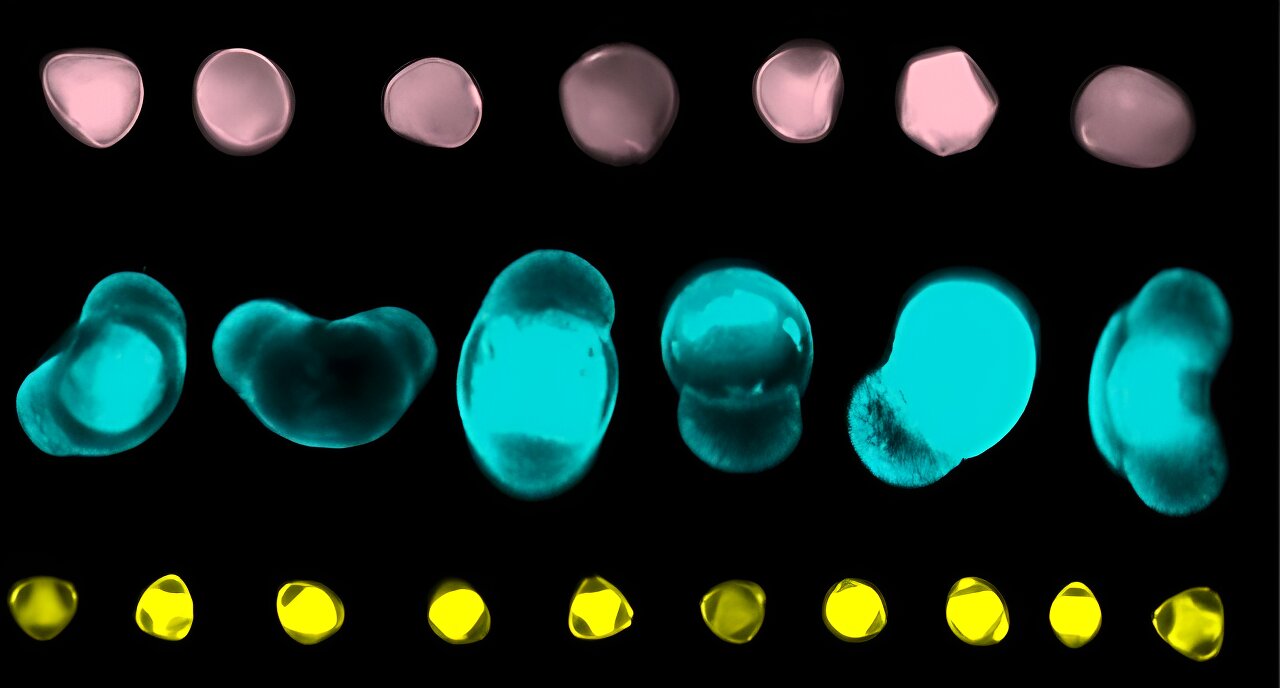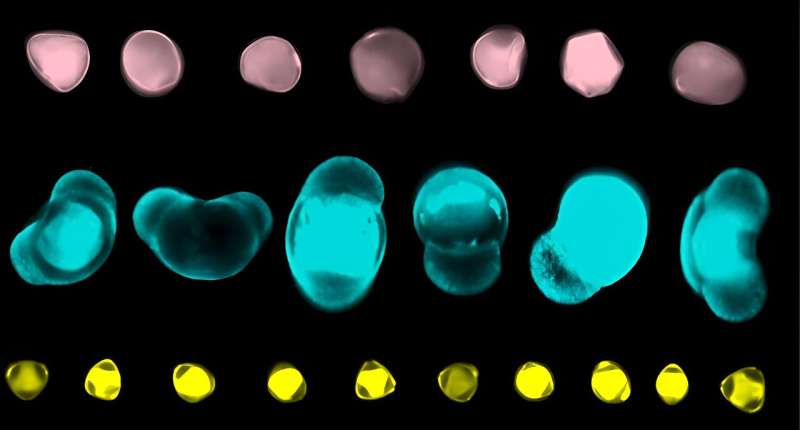

An emerging system which combines rapid imaging with artificial intelligence could help scientists build a comprehensive picture of present and historic environmental change—by swiftly and accurately analyzing pollen.
Pollen grains from different plant species are unique and identifiable based on their shape. Analyzing which pollen grains are captured in samples such as sediment cores from lakes helps scientists understand which plants were thriving at any given point in history, potentially dating back thousands to millions of years.
Up to now, scientists have manually counted pollen types in sediments or from air samples using a light microscope—a specialized and time-consuming task.
Now, scientists at the University of Exeter and Swansea University are combining cutting-edge technologies including imaging flow cytometry and artificial intelligence to build a system capable of identifying and categorizing pollen at much faster rates.
As well as building a fuller picture of past flora, the team hope the technology could one day be applied to more accurate pollen readings in today’s environment, which may help provide hay fever sufferers to mitigate symptoms. The paper is titled “Deductive Automated Pollen Classification in Environmental samples via Exploratory Deep Learning and Imaging Flow Cytometry”, and is published in New Phytologist.
Dr. Ann Power, of the University of Exeter, said, “Pollen is an important environmental indicator, and piecing together the jigsaw of different pollen types in the atmosphere, both today and in the past, can help us build up a picture of biodiversity and climate change.”
“However, recognizing what plant species pollen belongs to under a microscope is incredibly labor-intensive and cannot always be done. The system we’re developing will cut the time this takes dramatically and improve classifications. This means we can build a richer picture of pollen in the environment far more swiftly, revealing how the climate, human activity and biodiversity has changed over time, or better understand what allergens are in the air we breathe.”
The team has already used the system to automatically analyze a 5,500-year-old slice of lake sediment core, rapidly classifying over a thousand pollen grains. In the past, this would have taken a specialist up to eight hours to count and categorize—a task the new system completed in well under an hour.
The new system uses imaging flow cytometry—a technology which is typically used to investigate cells in medical research, to quickly capture pollen images. A unique type of artificial intelligence has then been developed based on deep learning to identify the different types of pollen in an environmental sample. This is able to make these distinctions even when the sample is imperfect.
Dr. Claire Barnes, from Swansea University, said, “Up to now, the AI systems in development to categorize pollen learn from and test on the same pollen libraries—which means each sample is perfect and belongs to species previously seen by the network. These systems are not able to recognize pollen from the environment that’s taken some knocks along the way, nor to categorize pollen not included in training libraries.”
“Incorporating a unique version of deep learning into our system means the artificial intelligence is smarter and applies a more flexible approach to learning. It can deal with poor quality images and can use shared species characteristics to predict what family of plant the pollen belongs to even if the system hasn’t seen it before during training.”
In the coming years, the team hopes to refine and launch the new system, and to use it to learn more about grass pollen, a particular irritant for hay fever sufferers. Dr. Power said, “Some grass pollens are more allergenic than others. If we can understand better which pollens are prevalent at specific times, it would lead to improvements in the pollen forecast that could help people with hay fever plan to reduce their exposure.”
More information:
‘Deductive Automated Pollen Classification in Environmental samples via Exploratory Deep Learning and Imaging Flow Cytometry’, New Phytologist (2023). nph.onlinelibrary.wiley.com/do … ll/10.1111/nph.19186
Provided by
University of Exeter
Citation:
Artificial intelligence could help build pollen jigsaw of present and ancient flora (2023, September 7)
retrieved 7 September 2023
from https://phys.org/news/2023-09-artificial-intelligence-pollen-jigsaw-ancient.html
This document is subject to copyright. Apart from any fair dealing for the purpose of private study or research, no
part may be reproduced without the written permission. The content is provided for information purposes only.

